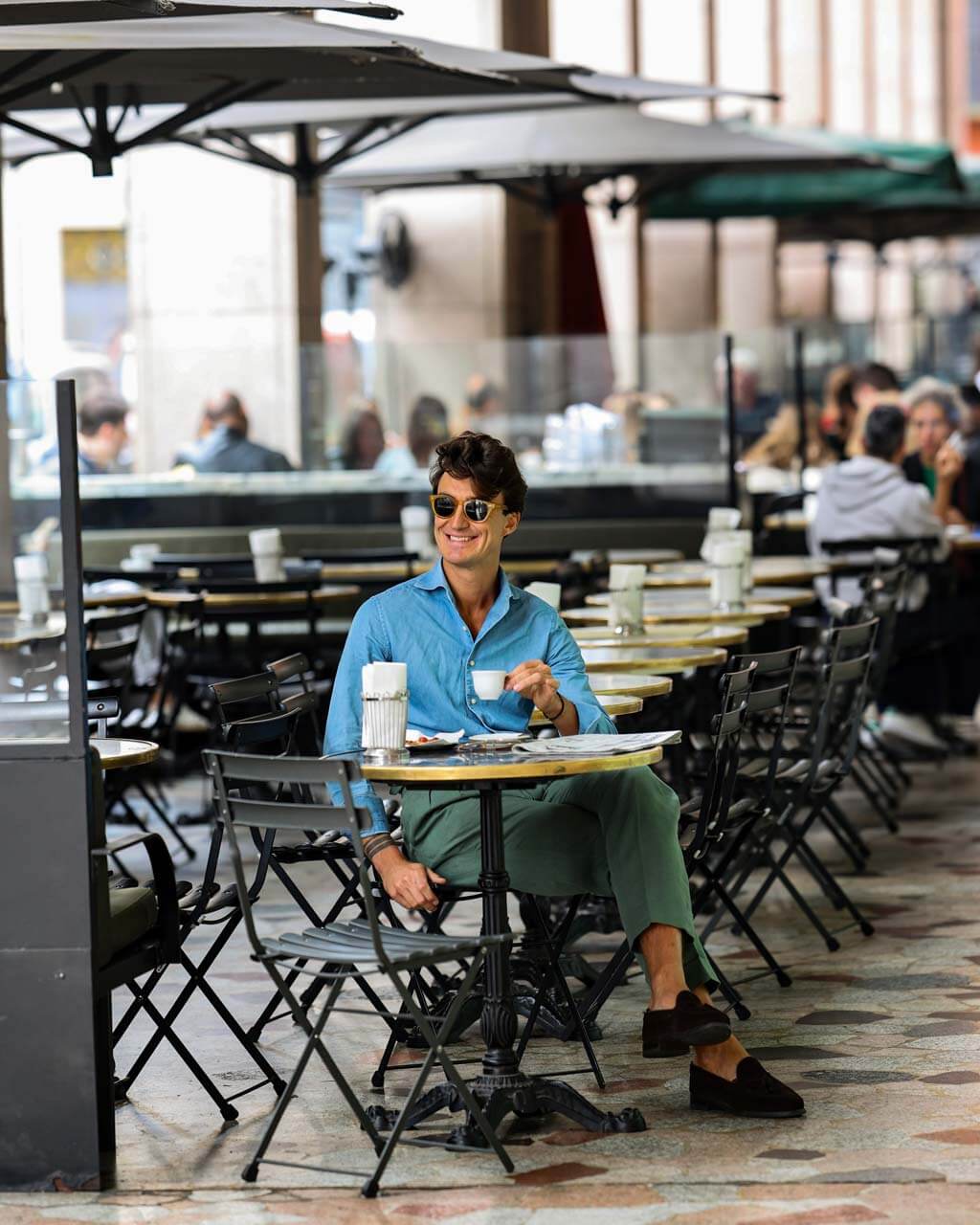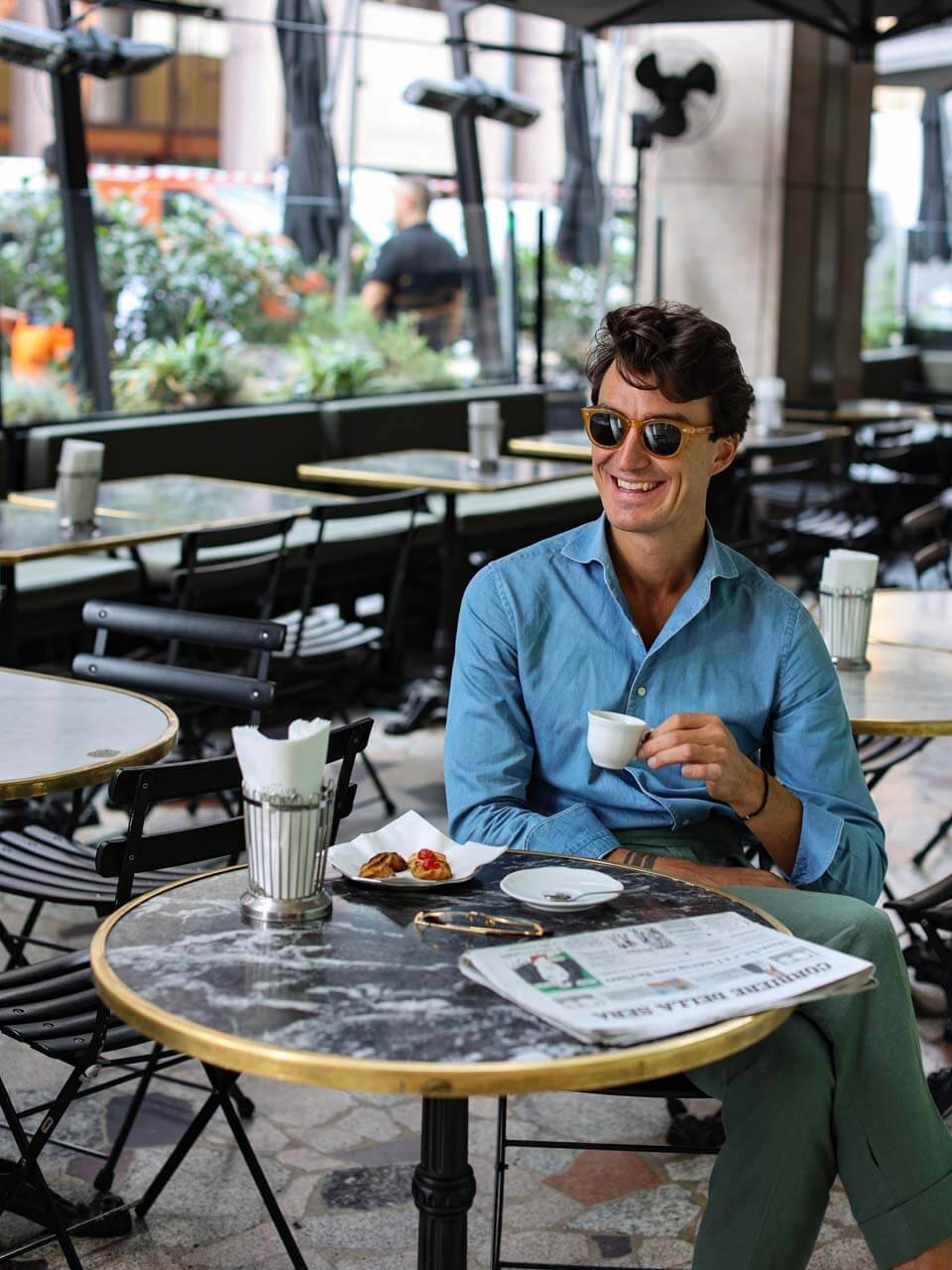Today, over a cup of coffee, I’ll tell you about coffee 😅

History
Let’s start with the history:
The first espresso machines brewed a drink similar to modern filter coffee. In 1884, Angelo Moriondo invented a coffee machine and introduced his invention in Turin. He wanted to satisfy the perpetually rushing customers in his bar. The drink prepared in such a machine was called “espresso.” Espresso in Italian means “pressed out.” The name was also akin to the word “expressly,” which means “specially.” That is, a drink prepared separately for each guest.
A few Italian rules:
Having cappuccino after 12 p.m. can be a big mistake. In big cities, it’s considered normal, but in smaller towns, people might look at you with bewilderment.
Yes, I personally asked Italians about Americano several times. You should have seen their reaction 😅
Italians believe that espresso helps with digestion, so they drink it after meals. I believe in that too and sometimes do the same.

Year after year, coffee machines have been modernized, but espresso has remained the same. Italian coffee changed the world, but itself remained unchanged. I’m glad it reached us. I call espresso a little life. It’s like comparing two cultures: American and Italian.
When you rush into Starbucks in America or another metropolis, ordering a huge cup of coffee to go. Yes, it’s a common accessory on the streets.
For Italians, it’s a different ritual. You come to a bar, usually the one you’ve been going to for many years, and greet the barista first, who knows that you come at a certain time, you have a fresh newspaper, you discuss the news, who cooked what for dinner, and other events that happened in the last day since the last meeting. You exchange aromas, he gives you the scent of fresh coffee, and you, in return, the scent of a fresh newspaper. After drinking this aromatic drink, getting refreshed, learning about what’s new, you move on. That’s why I call espresso a little life. And many people take coffee to go, rush to the office, throw away the cup before entering the office building, and go to their workplace.
Bar Farnese
For some, espresso is a little life, and for others, it’s a whole one. I want to recommend you a wonderful place in Rome, where a man has been brewing coffee for visitors for over 75 years, and he has never worked anywhere else. He has been working there since he was 17, and he has a photo from his first day of work. It’s worth coming there because over this long period, the man has created a very warm atmosphere thanks to his energy. He is a very kind and pleasant man, he brews coffee and sincerely greets everyone, filling this little cup of espresso with great warmth. You would see his kind and clear eyes. I was in Rome and went there every day, except Sundays, as they don’t work on Sundays, and I was disappointed to find that out.
The place is called Bar Farnese. Now I have one more place in Rome. The city where great artists like Michelangelo, Bernini, Borromini created, and a place where I found a new story in the form of this small and cozy coffee shop.
You know what’s the most dangerous? Sometimes we forget that we had that cup of coffee in our hands. And that’s how it is with life. Drank and forgot, lived through and didn’t notice.
Bonus Tip: Espresso at Home
The basic recipe for making espresso is quite straightforward, but it requires precision and sometimes a bit of practice.

To make a traditional espresso, there are several essential tools and equipment you’ll need.
- Espresso Machine: There are many types of espresso machines, ranging from manual to semi-automatic, automatic, and super-automatic. A good machine to start from is Rocket Appartamento.
- Coffee Grinder: A good quality burr grinder is crucial for grinding your coffee beans to the correct consistency. My pick is Niche Zero.
- Portafilter: This is the handle with a basket that you fill with ground coffee and then attach to the espresso machine. Most espresso machines come with a portafilter.
- Tamper: A tamper is used to evenly press the coffee grounds into the portafilter. A proper tamp ensures even water distribution through the coffee grounds.
- Coffee Scale: Precision is key in making good espresso, so a small digital scale to measure your coffee grounds is very helpful.
Brewing
The standard dose for a single shot of espresso is about 7-9 grams of ground coffee. For a double shot, use 14-18 grams. Evenly distribute the coffee grounds in the portafilter and then tamp them down with firm, even pressure to create a smooth, level surface. Lock the portafilter into the espresso machine. Start the shot and aim to extract about 30 ml of espresso for a single shot or 60 ml for a double shot. The ideal extraction time is usually between 25-30 seconds. If it takes less time, the grind may be too coarse, and if it takes more time, the grind might be too fine.
Fact in the Spotlight
The first wristwatches were for women. Men preferred pocket watches, and watches on straps and bracelets were considered strictly a feminine invention.
Quote of the Week
You’ll never cross the ocean until you have the courage to lose sight of the shore.
Christopher Columbus
That’s all for today. See you next week!
Yours sincerely, Anton Masko













